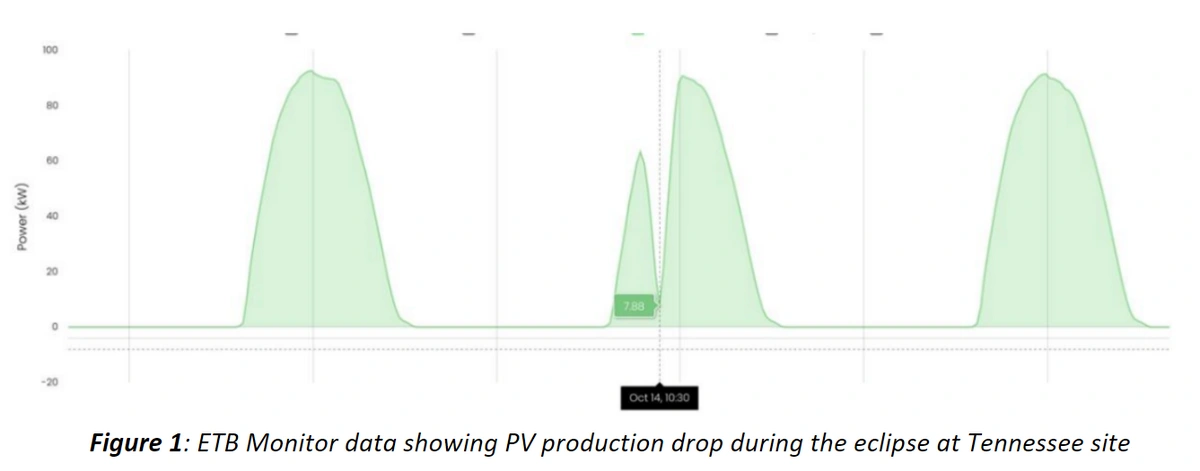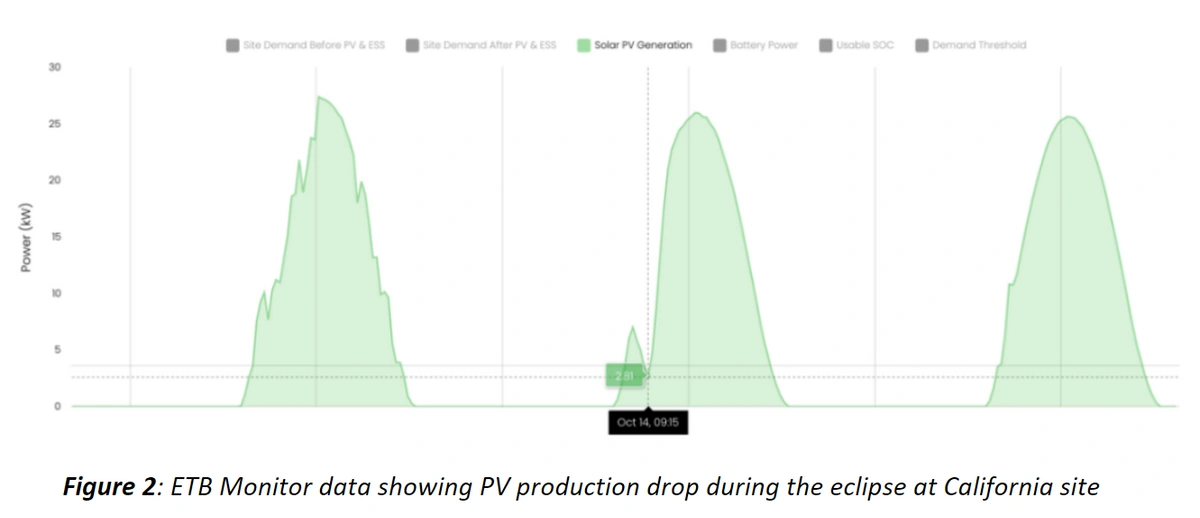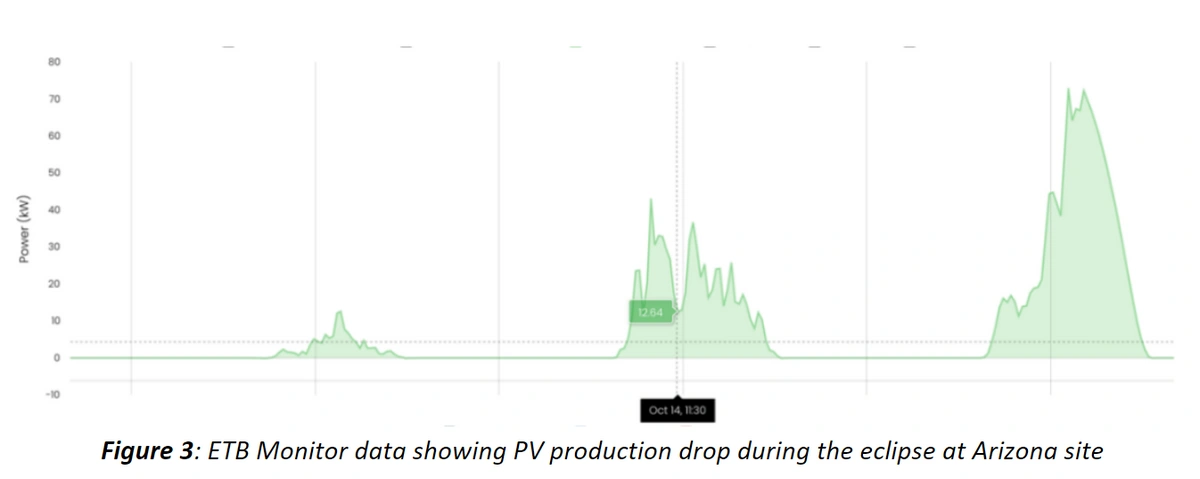An annular solar eclipse is a rare occurrence that can be viewed for a very short time. This type of eclipse is hallmarked by phases of a partial solar eclipse, occurring very gradually. On October 14, 2023, an annular eclipse event lasted approximately two hours, and its path passed through a section of the country with historically high solar PV production capacity and at the eclipse’s peak, it appears to block all but the sun’s outer edge, appearing as a “ring of fire.”
While most are watching safely indoors via camera, at Energy Toolbase, we were more intrigued about the after-effects of it and what it does to solar PV production at our active solar and energy storage sites.Acumen EMS™ andETB Monitor are deployed on sites across the United States and span different geographies and climates. Our metering data indicated an impact on our sites that can be attributed to the annular solar eclipse. There was a consistently significant drop in PV production between 9:00 and 10:00 a.m. Pacific time on the day of the eclipse. Solcast, a solar weather forecasting tool, adjusted its expected PV production within ETB Monitor based on the upcoming eclipse, prepping the systems for the drop. Acumen EMS did not have any responses to this drop – during the morning and midday hours, the PV is generally used to charge the batteries.
While solar eclipses can be forecast in advance by several years, they cause notable drops in solar generation and decreases from other unpredictable sources (i.e., extreme weather, level of cloud coverage), making securing energy storage technology mission-critical for electric grid operators. American electricity grids treated this as a test run in preparation for the April 2024 Total Eclipse. For example, the Electric Reliability Council of Texas (ERCOT) and the California Independent System Operator (CAISO) prepared carefully with comprehensive plans, ERCOT especially bracing for impact when the eclipse hit midday. The U.S. Department of Energy Solar Energy Technologies Office (SETO) is undergoing an initiative to bolster grid resiliency, financing research programs to support power maintenance during various disruptions.




